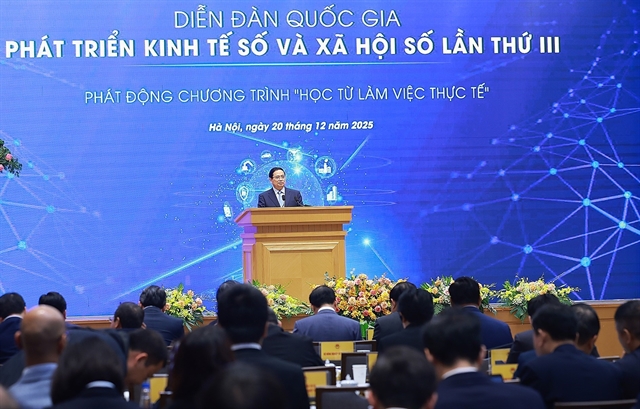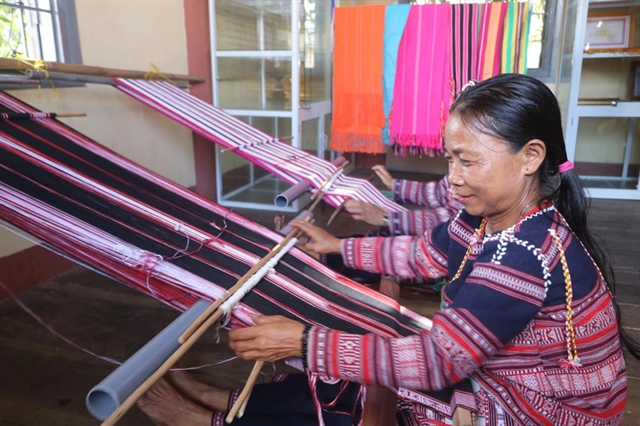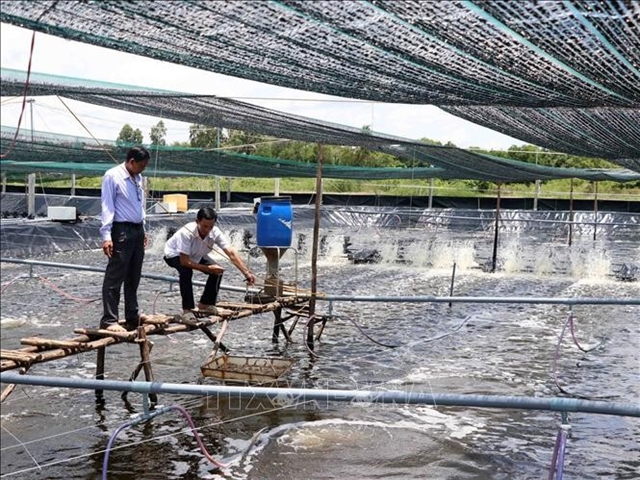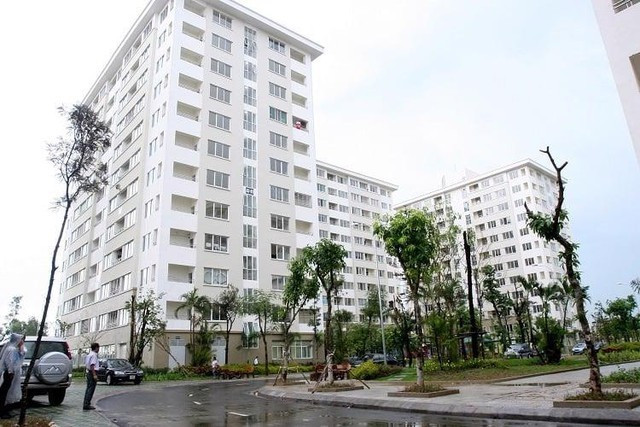 Sunday/Weekend
Sunday/Weekend
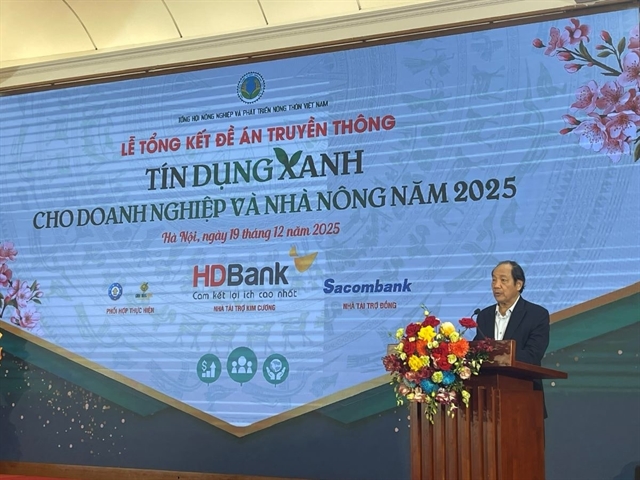
 |
| ON TRACK: Vietnamese tourists pose for a photo with a Laos-China high-speed train. Photo courtesy of Dream Team |
By Lương Hương
Just over three years ago, the 300km journey from Laos’ capital city of Vientiane to the UNESCO World Heritage town of Luang Prabang took up to 9 hours on a night bus.
However, this arduous journey, after many bumps and curves on the way, has been significantly reduced to less than 3 hours with the opening of a high-speed railway.
The rail system is the result of a landmark partnership between Laos and China. It is a project that connects China’s “Belt and Road” initiative with Laos’s strategy to transform from a “landlocked” to a “land-linked” country.
The first high-speed line connecting Vientiane to Luang Prabang was completed in 2021 after five years of construction. This railway journey passes through some of Laos' most breathtaking scenery, with the trains reaching top speeds of 160km/h.
In Laos, the high-speed trains, or the Electric Multiple Unit trains, run on a route of over 400km, passing through six main stations: Vientiane, Vang Vieng, Luang Prabang, Muang Xay, Luang Namtha, and Boten.
Despite their high speed, the trains provide a remarkably smooth and quiet ride, even as they pass through numerous tunnels carved through the mountainous, forested terrain.
The fares for the train vary depending on the route and seating class. The 150km first-class trip from Vientiane to Vang Vieng, which takes less than an hour, is priced at 273,000 kip (US$12.30), while the 300km trip from Vientiane to Luang Prabang costs 522,000 kip.
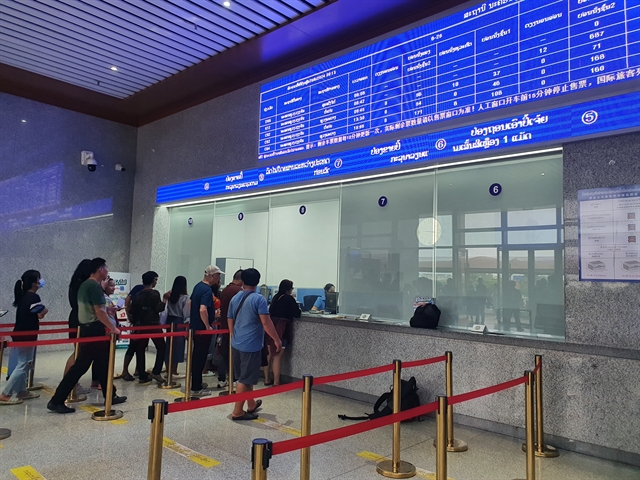 |
| QUEUING UP: Passengers buying tickets at Vientiane station. VNS Photo Lương Hương |
Tickets can be pre-booked between four days and up to 15 days in advance for domestic travel. Passengers can download the LCR Ticket application to check the train schedule and map, although registration requires a Laos mobile phone number.
The stations are clean and modern, with spacious waiting areas that can accommodate up to 2,400 passengers. There are also first-class lounges and souvenir shops selling Lao specialities like coffee and dried beef at each station.
The architecture of each station is particularly impressive, blending the distinctive cultural heritage of Laos with modern elements. They are decorated with the colours of the Dok Champa, the national flower of Laos, featuring curved roofs reminiscent of local temples and pagodas.
 |
| FUSION FACADE: Luang Prabang train station's architecture is a combination between traditional and modern elements. VNS Photo Lương Hương |
To board the train, passengers must undergo a security check that takes less than five minutes and present their ID or passports.
Each Laos-China high-speed train consists of nine carriages: a locomotive, a dining car, a business class car, a first-class car, and five economy class cars, totalling 720 air-conditioned seats. The business and first-class carriages are located at the front of the train.
Each seat is equipped with an electrical power outlet and a tray table similar to those on aeroplanes, allowing passengers to work on their laptops or enjoy meals while admiring the beautiful landscape outside.
One drawback of the railway journey is the lack of stable internet connection, as Wi-Fi is not available aboard and the trains frequently pass through long tunnels, disrupting mobile internet access.
However, the stunning beauty of the natural surroundings – vast forests and mountains covered in clouds – often distracts passengers from the digital world, instilling a sense of calmness.
The trains arrive and depart punctually, precisely according to the schedule and ticket timings. Departing from Vientiane at 9:45am, my train halted at Vang Vieng for five minutes before continuing its journey, reaching Luang Prabang at 11:49.
For travellers seeking immersive nature experiences, stopping at Vang Vieng station is ideal. There, they can continue to explore various destinations and engage in activities such as mountain hiking, canoeing, visiting limestone caves, swimming in the Mekong River, or relaxing in the emerald blue waters of the Blue Lagoon.
Upon arrival at Luang Prabang, a UNESCO World Heritage site since 1995, tourists can explore attractions like the Kuang Si Waterfalls, the Royal Palace, Wat Xieng Thong Temple, climb Mount Phousi, and participate in Tak Bat, also known as the Alms-Giving Ceremony, a daily Buddhist ritual observed in Laos.
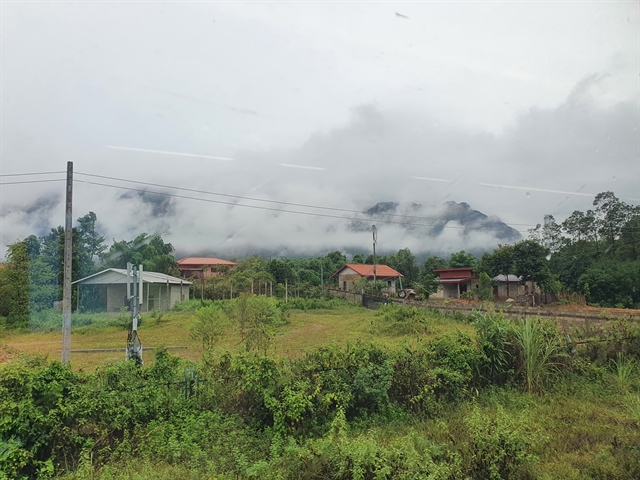 |
| MISTY MORNING: The train tracks pass through a tranquil Lao landscape. VNS Photo Lương Hương |
Since their debut service, the high-speed trains have offered tourists an exciting way to explore the “Land of a Million Elephants” due to their exceptional convenience and reliability.
“Returning to Laos after ten years, I have noticed many changes in this peaceful country, especially in its infrastructure,” said Đoàn Phước Trường, a travel blogger from HCM City.
“Thanks to the high-speed trains, tourists like me have been able to shorten our travel time from the south to the north of Laos. I've noticed that Laos's tourism industry is developing in a well-planned, systematic manner, without excessive commercialization of tourism services. Instead, they have managed to preserve and maintain their traditional cultures.
“The entrance fees to historical sites are the same for Lao citizens and international visitors. There is also no issue with haggling, bargaining, or overcharging. The streets are free of traffic congestion and honking horns, with a slow-paced and peaceful rhythm of life."
For the Lao people, the railway project has significantly enhanced their connectivity across the country.
“I think it's a big change for Laos's transportation. It used to be very difficult for the Lao people to travel, especially in the north because of the mountainous roads. We used to spend so much time travelling by car. It was risky during the rainy season because of bad road conditions,” said Phothong Chanthavilay, who works as a translator in Vientiane.
“Now we can reach Luang Prabang in less than 3 hours instead of 8 or 9 hours like before. We can take the morning train to the destination and return in the afternoon. So, I think it is a very meaningful change for the country that we have another option that is safer and saves us more time.” VNS

